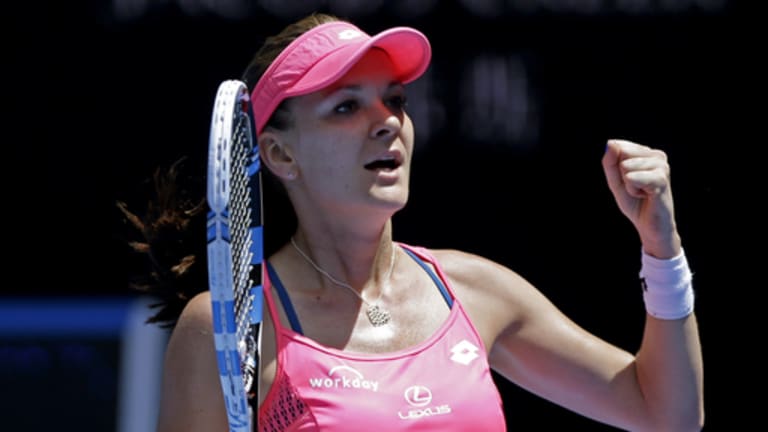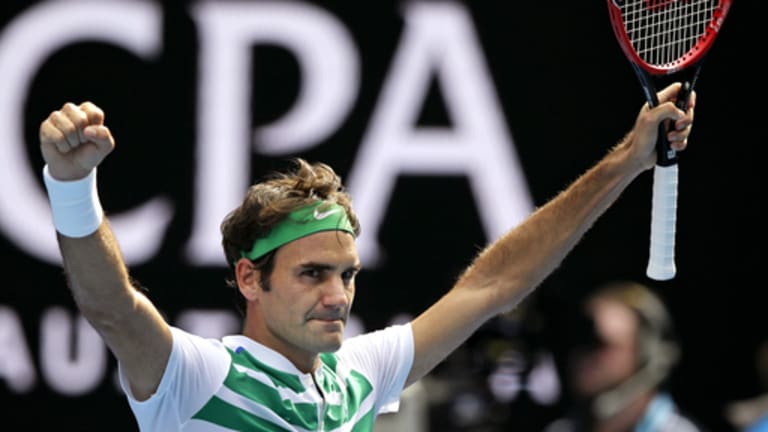After a near-loss experience in the fourth round against Anna-Lena Friedsam, who cramped after leading 5-2 in the third set, Radwanska said she was looser and more relaxed for her quarterfinal—she was playing, you might say, on borrowed time. It showed: She cruised, in her cannily instinctive way, to a 6-1, 3-1 lead. That’s where Suarez Navarro chose to make her stand, and brought the score back to 3-3. And that’s where the two played the best point of the match, a long and winding rally that sent both women up and back and corner to corner. Somewhere near the end of it, Radwanska hit the most memorable shot of the match for me: Running hard along the baseline, toward her backhand side, she flipped up what for most people would have been a desperation lob. Aga, of course, has too much self-control to ever seem desperate. She sent the ball up toward the hole in Rod Laver Arena’s roof, and over Suarez Navarro's head. It eventually touched down in the opposite corner of the court, a couple of feet inside both the sideline and the baseline. This was as far and high as you can hit a ball on a court, but Radwanska made it look as if she had placed it exactly where she wanted it to go, down to the millimeter, the way the rest of us might place a drop shot if we had all the time in the world to hit it.
Winning a Battle, Losing the War



